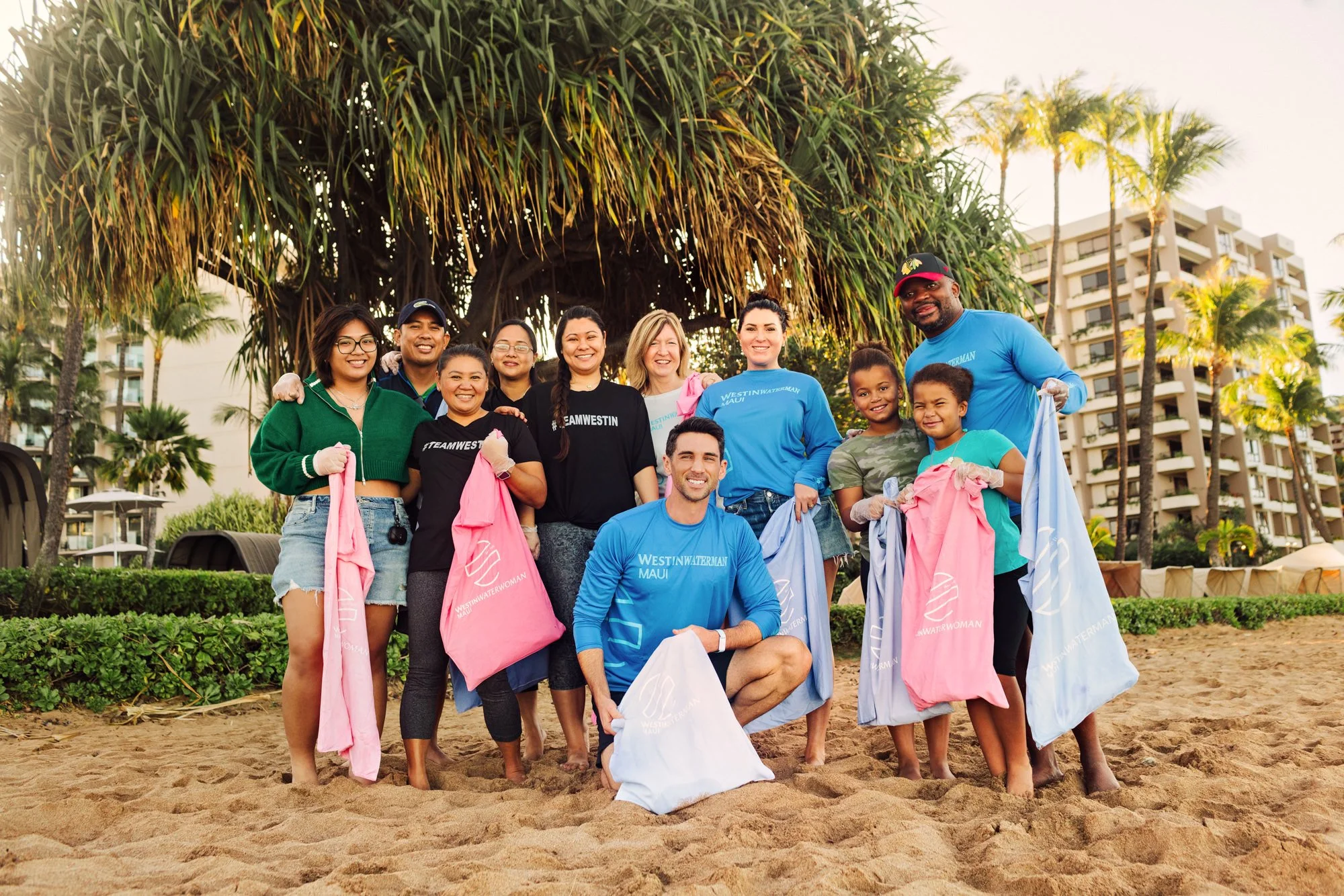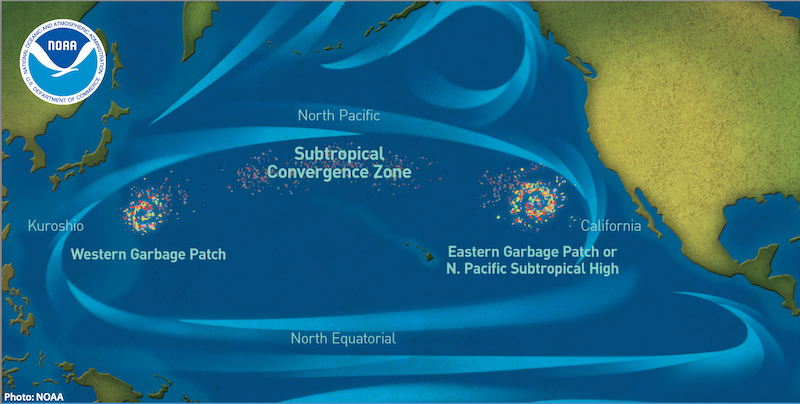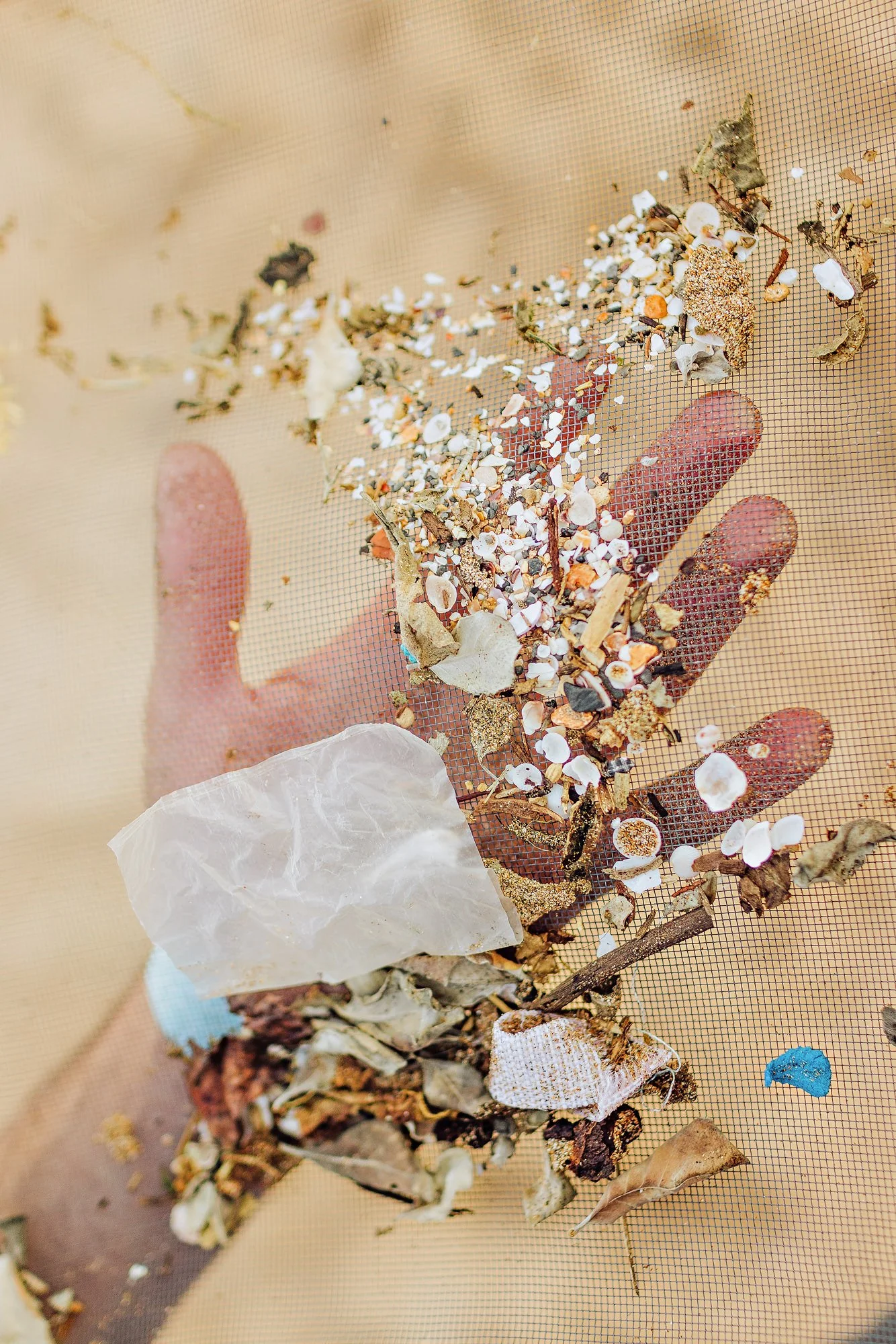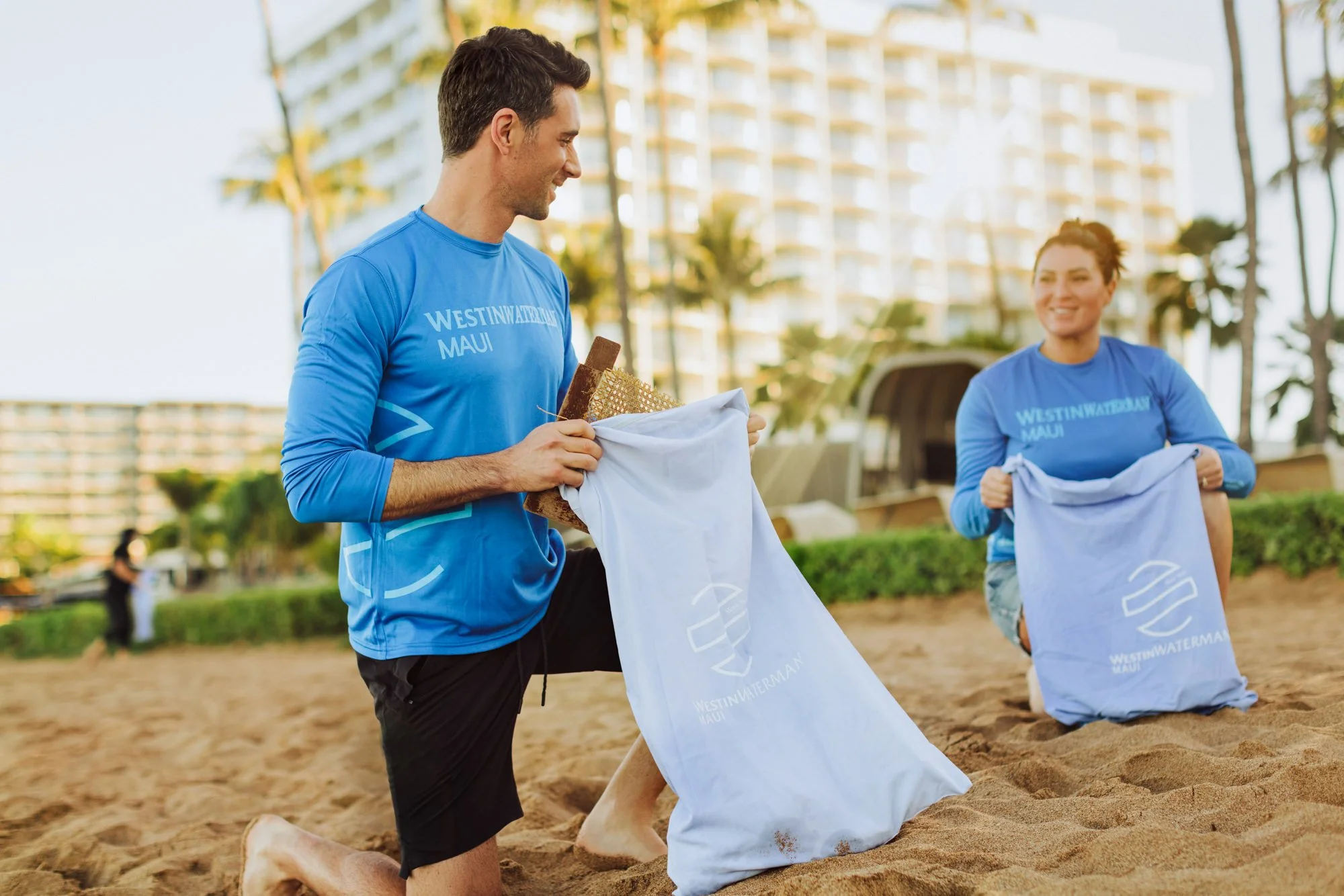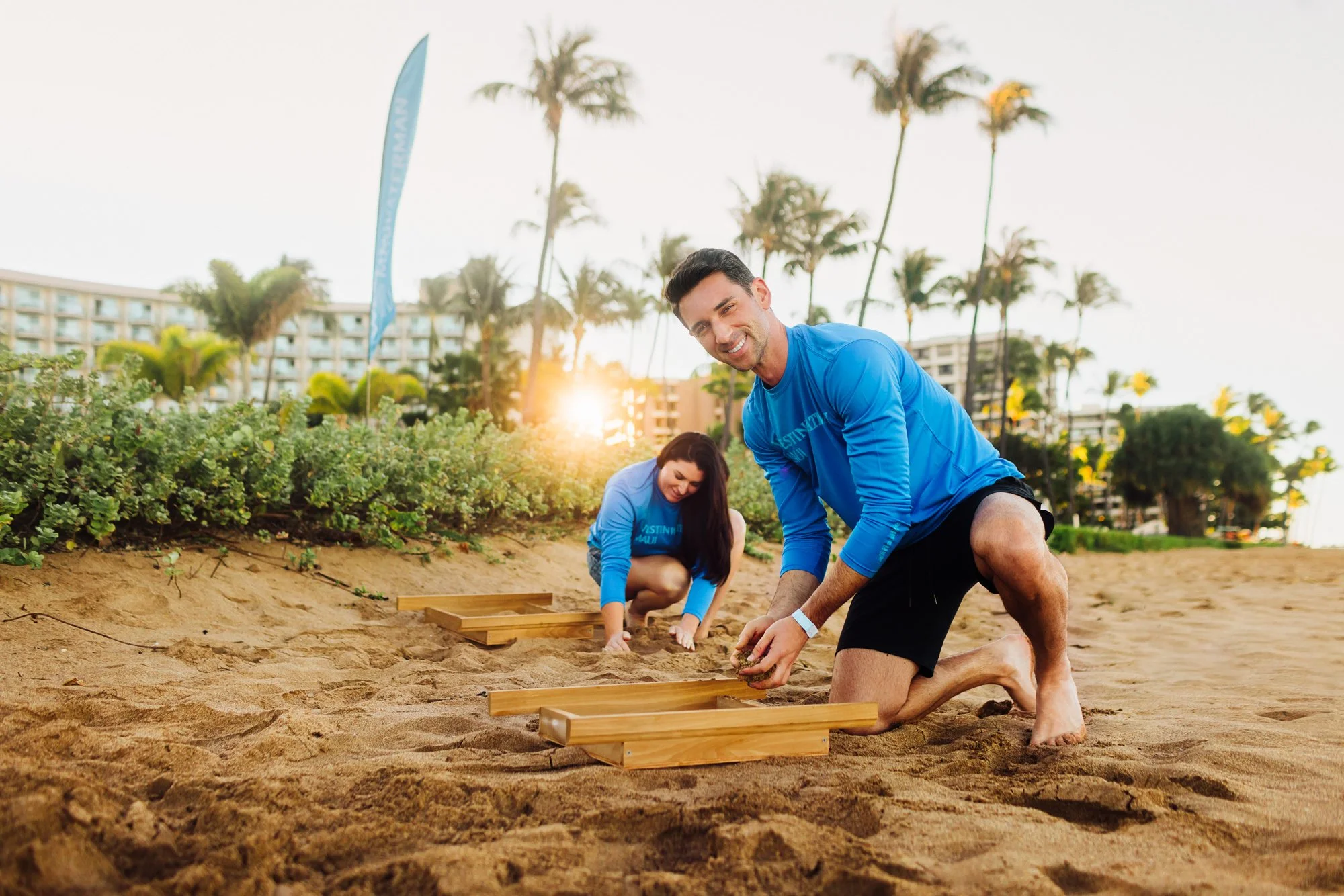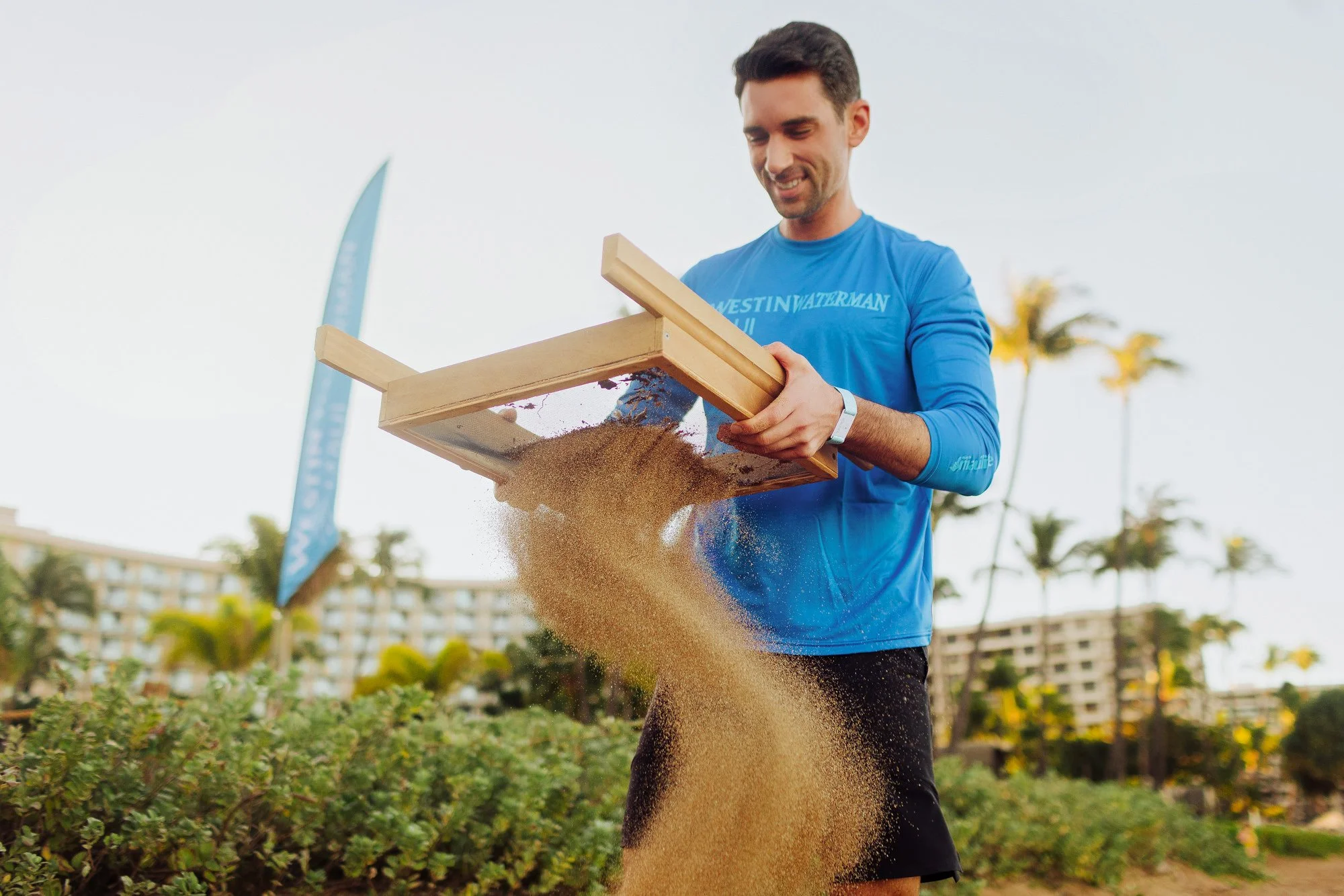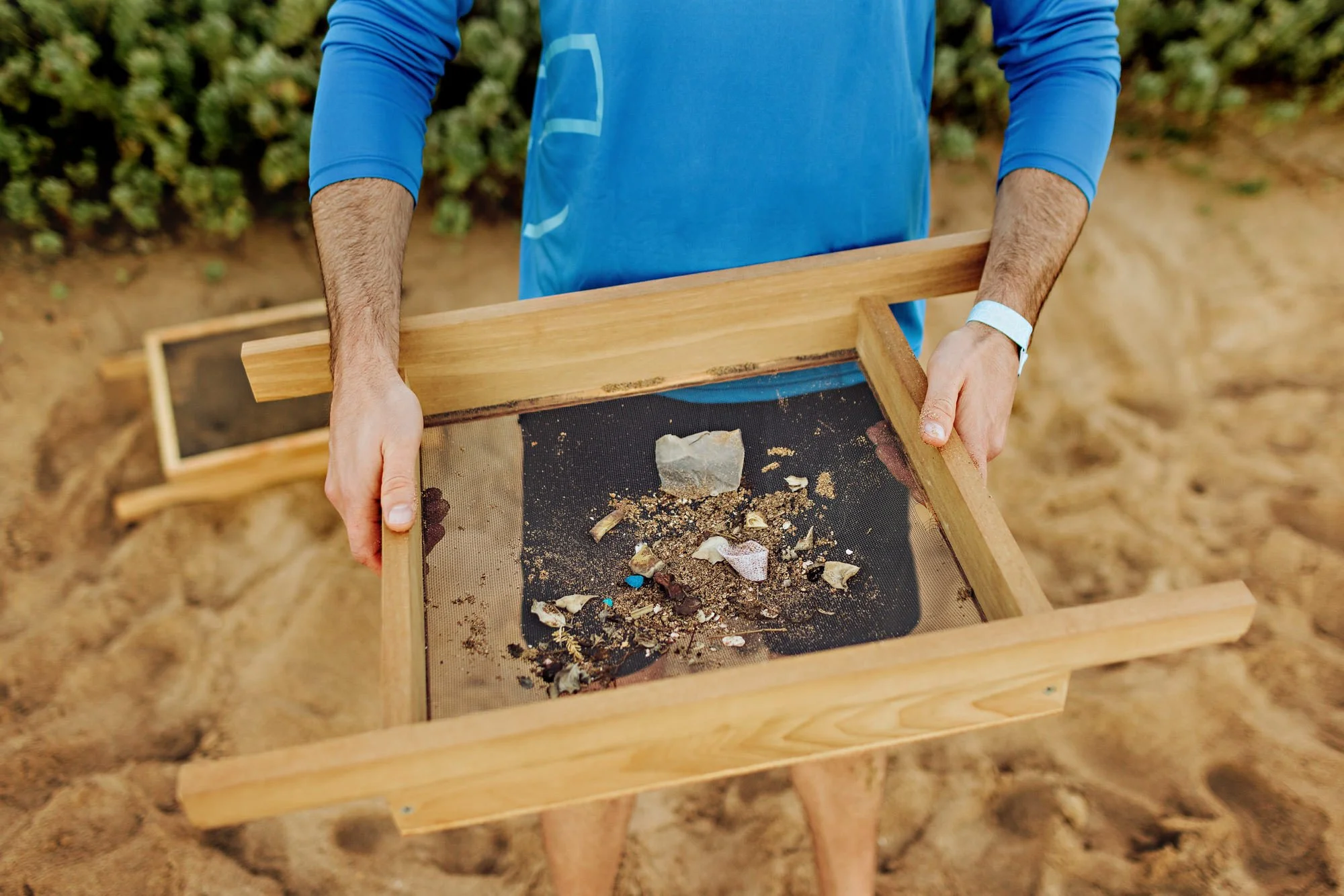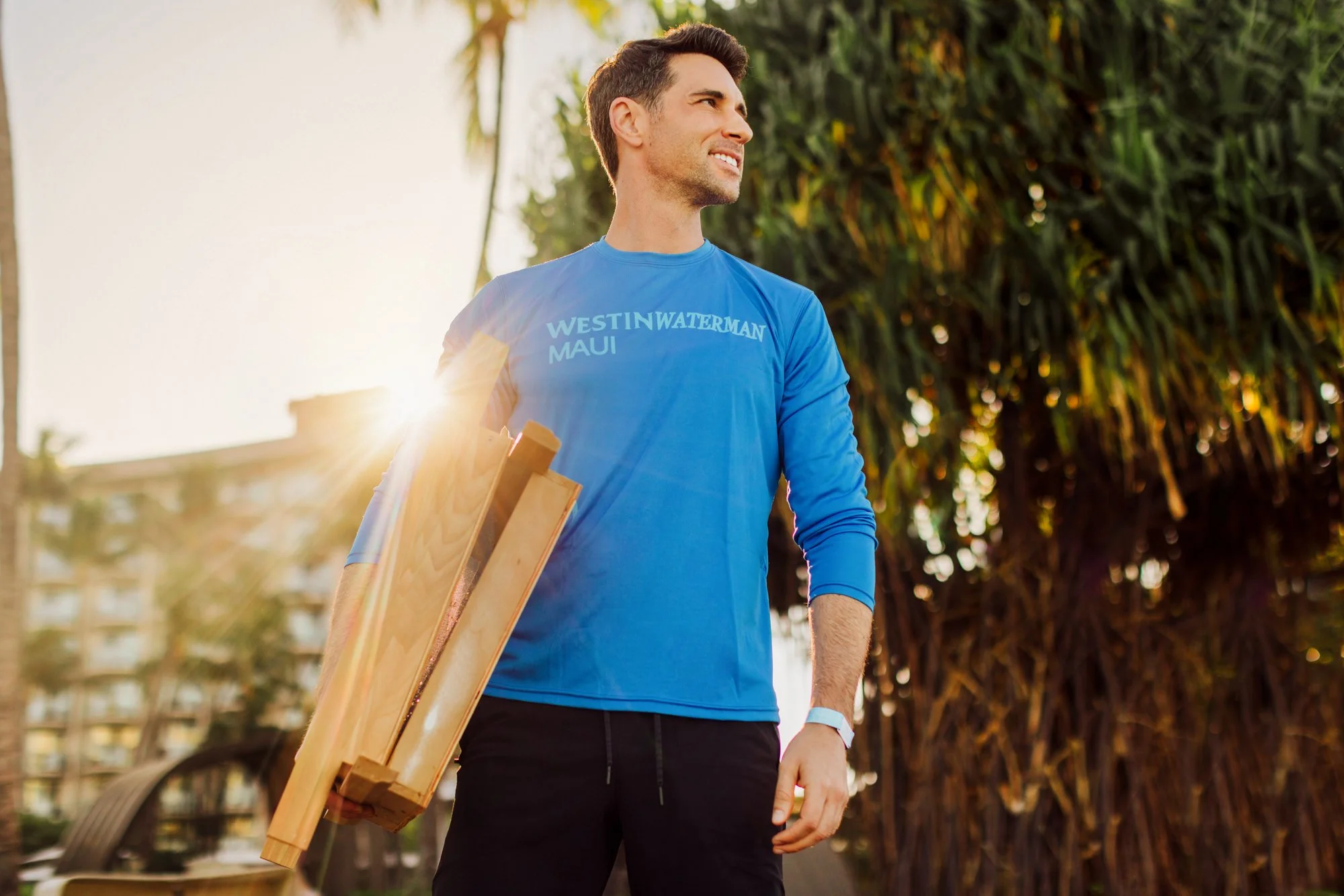Pollution in paradise, and the new efforts to clean it up
Thinking of Hawaii conjures up images of pristine beaches and clear, blue water.
If you look closely, you’ll see a growing problem with pollution. Specifically, the islands are awash with micro plastics, swirling onshore from the man-made disaster known as the “Great Pacific Garbage Patch.”
On a recent trip to Maui, I took part in a unique program offered by the Westin Maui Resort, which left me enlightened about the problem, and impressed with the hotel staff’s efforts to put a focus on sustainability.
Check out this video of my experience, and see how I embarrassed myself toward the end :)
The “Great Pacific Garbage Patch” is the name given to the accumulation of plastics, swirling in the currents in the ocean between Hawaii and California.
Hawaii is (unfortunately) positioned to pick up a lot of the debris from the currents, as this graphic from NOAA shows:
Microplastics are garbage, broken down over time by solar radiation and salt water into tiny fragments, which are easily ingested by marine life.
The National Institutes of Health studied microplastics on several of Oahu’s beaches, and found plastic levels in the sand spike after storms.
They don’t just blend into the sand. Microplastics resemble the food marine animals eat. Digesting them is toxic, and affects “the organisms’ behavior, fitness and abundance,” according to the NIH report.
Sifting the sand on Maui revealed a lot of white and colored plastics, which I’d always just assumed were tiny shell fragments on the tide lines.
While tourists likely don’t even see the plastics in the sand because they’re more focused on the general paradise of the islands, people who live in Hawaii certainly do take notice.
The problem grew worse during the pandemic, with single-use PPE (masks) lining the shores.
The staff at the Westin Resort on Maui launched a program, called the Westin Waterman, to educate their visitors and also help clean up their beaches.
“Waterman” is a term in island culture.
It’s not just a boater or surfer or fisherman. You could think of a “waterman” as an oceanic ambassador, and a person who appreciates, respects, and understands the sea.
As part of the Westin Waterman program, well-known local watermen (and women) are invited to come share their knowledge with guests.
They talk about living off the ocean, safety, reading the tides, and much more.
Their backdrop is the Humpback Whale National Marine Sanctuary off the coast of Maui, right in front of the hotel.
Not a bad stage, but one that collects more than its fair share of plastics, as we found in our beach cleanup.
A frequent Westin Waterman guest speaker is champion surfer Zane Schweitzer, who talks to the guests about sustainability and other environmental issues.
The Westin easily finds people in the Maui community to volunteer their time to speak. It gives them a platform to share their passion with people visiting from around the world, like us!
My friend, Tiffany, impressed me by waking up an hour before dawn to meet me for the beach cleanup, which is part of the program.
Maybe it was the bright blue rash guard shirt (a surfer’s shirt) with the phrase “Malama Ike Kai” (Protect the Ocean) that lured her out :)
If you look closely, you’ll see: we’re loading up old pillowcases with our beach trash. The Westin reuses their old pillowcases, which would’ve just been tossed, to serve a new purpose down at the beach.
The Maui County Council banned the sale and use of single-use plastic food containers, utensils, cups, and straws as of March 1, 2022.
Embarrassingly, I showed up to the Westin Waterman program with a towel, sunscreen, and other beach items IN A PLASTIC BAG I’d brought from home! Yes, I was “that guy.”
Anyway… again, a lot of the pollution is too small for the eye, so we sifted some of the sand to see the micro-plastics… at sunrise:
As I mentioned, I thought the white particles on the tide lines along the beach were all shells. Sadly, it’s a lot of white plastic.
This pretty beach in Maui isn’t nearly as bad as some of the others on the island or on other islands. Still, it’s loaded with micro-plastics.
Studies have shown: many of the larger pieces are from the fishing industry.
And while most of the plastics come from Asia, Americans send a lot of trash to Asia for recycling purposes. So, we share in much of the blame.
While the visual of our collected trash pile left an imprint on our minds, the staff told us: the Waterman program isn’t just about the mass of garbage, or tidying up the beach.
It’s more about the learning process, and the new knowledge tourists take away with them. The goal is to impact people in a way that changes their habits at home.
We’re seeing environmentally-friendly, sustainable programs like Waterman pop up on all of the islands.
The Hawaii Tourism Authority recently started a Malama Campaign.
“Malama aina” essentially means ‘taking care of or preserving the land.’ The programs invites tourists to take a bigger role in learning about the culture and environment of the islands.
Many hotels are offering free nights if you agree to participate in a reforestation project or beach cleanup.
The Tourism Authority has a list of options, though as you’ll see: they’re not always available. Still, worth checking out, and the environmental experiences (if they’re anything like Waterman) will be memorable!
The Westin Maui is expanding the Waterman Program, adding a paddle boarding option and more in the coming weeks. Plus, other Westin properties on the islands are planning to launch similar programs in the months ahead. They’ll be open to all guests.

